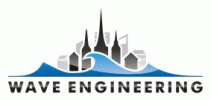The Tallinn team presented two papers aiming at creating a technology that would provide a substantial decrease of remote environmental risks (e.g. ship-caused pollution that frequently affects vulnerable areas far from the accident site) by minimizing the consequences of potential accidents. The central idea is smart use of the existence of statistically heterogeneous semi-persistent current patterns, which considerably affect pollution propagation as well as drift of various items such as vessels without propulsion, rescue boats or lost containers.
“An Empirical Method to Determine Patterns of the Risk of Coastal Pollution in the Gulf of Finland” (19 Jan 2010 B. Viikmäe, N. Delpeche, R. Isotamm)
“Semi-persistent Patterns of Transport in Surface Layers of the Gulf of Finland” (21 Jan 2010 T. Soomere, N. Delpeche, B. Viikmäe)
